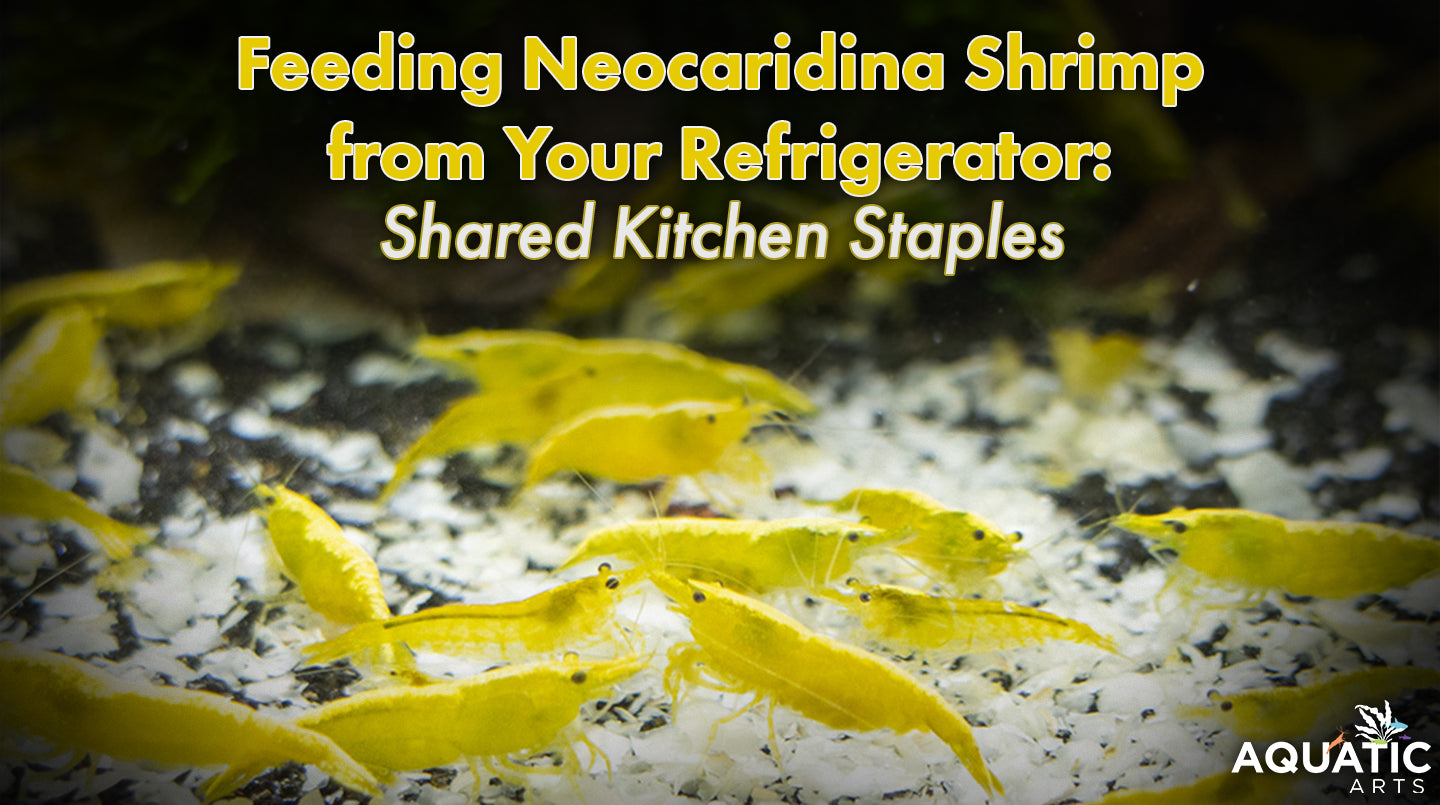Feeding Neocaridina Shrimp from Your Refrigerator: Shared Kitchen Staples

Feeding Neocaridina Shrimp from Your Refrigerator: Shared Kitchen Staples
3
Neocaridina shrimp have diverse dietary needs and can enjoy a variety of foods found in your kitchen. Your refrigerator can hold a treasure trove of delectable treats for these aquatic companions. Let's explore some fridge staples that can double up as nutritious and delightful treats for your Neocaridina shrimp.
3

The coloration of shrimp can be influenced by their diet to some extent. Foods rich in carotenoids, like certain fruits and vegetables, can potentially enhance the coloration of shrimp. Carotenoids are pigments found in various foods such as carrots, paprika, and some greens like spinach and kale. These pigments might contribute to brighter or more vibrant colors in shrimp.
3
Fridge Staples for Neocaridina Shrimp
Fruits:
- Banana: Small portions of ripe banana can be offered occasionally.
- Apple: Slice off a piece, ensuring it's free from seeds and core.
- Pear: Remove seeds and offer small slices.
- Watermelon: Remove seeds and offer small, seedless chunks.
- Cucumber: A favorite among shrimp, offer thin slices or chunks.
- Zucchini: Loved by Neocaridina, slice it into thin pieces.
Vegetables:
- Spinach: Blanched spinach leaves are a nutritious option.
- Kale: Another leafy green that can be blanched and offered.
- Carrot: Small, thin slices of carrot are appreciated.
- Broccoli: Offer tiny florets for a crunchy treat.
- Lettuce: Small amounts of soft lettuce leaves can be given.
3
Cooked Rice: Surprisingly, cooked rice, especially brown rice, can serve as a delectable treat for your Neocaridina shrimp. Rinse the rice thoroughly before cooking to remove excess starch, then cook it without adding any seasoning. Offer a small portion to provide a source of carbohydrates for your shrimp.
3

By experimenting with their dietary options, you have the chance to witness their varied responses and behaviors. While these shrimp may not express culinary opinions, their energetic movements indicate contentment with the menu provided.
3
Feeding Recommendations
Duration of Food in the Aquarium: When offering fruits and vegetables to Neocaridina shrimp, it's crucial to remove any uneaten portions after about 24 hours. Leaving uneaten food for extended periods can lead to decay, negatively impacting water quality in the tank. Shrimp consume these foods relatively quickly, so observing their feeding habits can help gauge consumption. If leftovers are significant after 24 hours, remove them to maintain a clean tank environment.
Water Quality Check: Regularly check water parameters to ensure the introduced foods haven't affected water quality adversely. Ammonia, nitrite, nitrate levels, and pH should be monitored. Maintaining a stable environment is crucial for the shrimp's health.
Moderation is Key: These foods should be supplementary to their primary diet, offered in small, manageable portions to prevent overfeeding and maintain water quality.
By incorporating these fridge staples into your Neocaridina shrimp's diet and practicing moderation and timely removal of uneaten portions, you can ensure a healthy and thriving aquatic environment for your shrimp companions.
As you explore diverse food options for your Neocaridina shrimp, your role as their culinary curator is both engaging and informative. Experimenting with foods like cucumber, rice treats, and occasional fruits offers insights into their dietary preferences and behaviors. Observing their reactions enriches their habitat and deepens your understanding of these aquatic companions.
All of the shrimp in this blog are available now on Aquatic Arts




